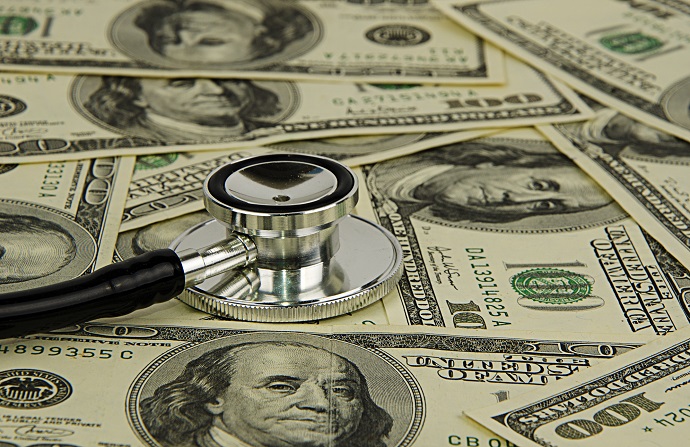Maryland All-Payer APM Reduces Medicare Hospital Costs by $429M
The Maryland all-payer alternative payment model exceeded its hospital cost containment goal of $330 million in hospital savings over five years, a report revealed.

Source: Thinkstock
- As the Maryland All-Payer alternative payment model starts its fourth year, a Health Affairs report shows that the program reduced Medicare hospital costs by $429 million, exceeding CMS requirements that the model save $330 million five years.
The Maryland All-Payer model requires all payers in the state to follow a global system, meaning hospital revenue for all payers is established at the start of each year. With hospital’s receiving a fixed revenue, CMS and Maryland intend to make hospitals financially accountable for care costs and quality.
And based on financial and care quality improvements, the state alternative payment model has been successful at making providers more accountable for their care, the report argued.
In addition to lowering hospital costs beyond the five-year goal, the Maryland All-Payer model also curbed all-payer per capita total hospital cost growth. CMS required the model to achieve lower annual all-payer growth rates than the 3.58 percent statewide long-term growth rate.
In 2014, the actual all-payer hospital cost growth rate was less than half the statewide long-term growth rate at 1.47 percent. The all-payer rate increased to 2.31 percent in 2015, but remained well below the state rate.
READ MORE: Using an Alternative Payment Model to Reduce Hospitalizations
Last year, however, the alternative payment model significantly reduced the all-payer hospital cost growth rate to a mere 0.35 percent.
Maryland all-payer hospital cost growth rates were also lower than the national growth rate, the report added. The alternative payment model achieved growth rates more than 4 percent below the national rate.
While Maryland experienced significant hospital cost reductions, the alternative payment model has seen only modest improvements with non-hospital cost growth rates.
Non-hospital utilization, such as skilled nursing facility and home health services use, substantially increased in 2015 as hospitals referred patients to non-hospital providers and worked to boost care coordination. While hospital readmissions significantly dropped with more non-hospital utilization, non-hospital costs increased.
As a result, non-hospital costs exceeded incremental hospital savings in 2015. Although, the report noted that the non-hospital cost increases did not cancel out overall hospital cost savings.
READ MORE: Understanding the Value-Based Reimbursement Model Landscape
Maryland hospitals and care partners, however, are reining in non-hospital costs. Last year, hospital cost savings outpaced non-hospital costs. The report attributed non-hospital spending improvements to hospital and care partner efforts to target medically complex patients, decrease hospital readmissions, and reduce unnecessary resource use.
Based on Maryland All-Payer model’s hospital and non-hospital spending since 2014, the report calculated a net savings of $319 million in Medicare total care costs. The savings total reflects $110 million in non-hospital spending since the model’s launch.
Additionally, the Maryland All-Payer model realized care quality improvements, even going beyond the care quality goals CMS set for the model.
Since 2014, Maryland hospitals lowered potentially preventable complications by 48 percent, surpassing the 30 percent reduction goal.
Hospital readmissions rates also went down under the model. Maryland’s Medicare all-cause readmission rate was over 7.9 percent more than the national rate in 2013. As part of the model’s requirements, the state agreed to lower the rate to national levels or lower.
READ MORE: Risk-Based Alternative Payment Models Key to Value-Based Care
By 2015, Maryland hospitals brought the state closer to achieving its hospital readmission goal. The state’s readmission rate fell to just 3.4 percent above the national rate, representing a 57 percent improvement.
Looking forward to the alternative payment model’s last two years, Maryland intends to expand the model to other healthcare organizations, improve chronic disease management, and align the model with other providers in the care continuum.
“The current model, with its focus on hospitals, creates a foundation for healthcare payment and delivery transformation for all patients and payers,” the report stated. “However, the current model does not have the full set of tools needed to address total cost of care.”
Maryland sent a progression plan to CMS late last year outlining the state’s proposals to update the alternative payment model for its second term starting in January 2019. The plan included extending the model to non-hospital and community-based providers, implementing a state-specific Comprehensive Primary Care model, and developing post-acute and long-term care alternative payment models.
The report concluded that the Maryland All-Payer model serves as a possible all-payer hospital cost containment solution for other states.
Vermont similarly implemented an all-payer accountable care organization (ACO) model in January 2017. The Vermont All-Payer ACO model will reimburse ACOs under the same payment structure while aligning quality measures, financial risk structures, payment mechanisms, and beneficiary attribution methodologies across payers.
CMS expects the model to limit healthcare spending growth for all payers to 3.5 percent. Medicare spending growth also needs to drop by at least 0.1 to 0.2 percentage points below the projected national Medicare spending growth rate.
